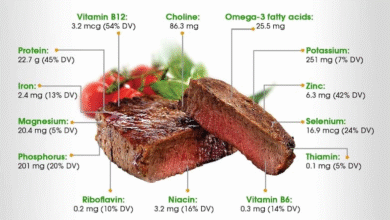7-Hydroxymitragynine: The Rising Threat of Synthetic Opioids

7-hydroxymitragynine, often referred to as 7-OH kratom, is a potent alkaloid extracted from the kratom plant, known scientifically as Mitragyna speciosa. This substance is gaining significant attention due to its opioid-like properties, resembling those of synthetic opioids in its effects on the body. As an increasingly popular self-treatment option, 7-OH has been utilized for pain relief and to alleviate withdrawal symptoms, yet it carries the risk of dependency and side effects. Recent scrutiny from the FDA over the health effects of this substance has raised concerns about its regulation and proper safety measures within the market. As authorities aim to address the presence of 7-hydroxymitragynine in various consumer products, the discussion surrounding kratom and its potential implications continues to grow amidst the ongoing battle against opioid addiction in the United States.
The discussion around 7-hydroxymitragynine, also known as 7-OH, highlights ongoing concerns related to kratom and its derivatives. As researchers examine the substance, it becomes clear that this opioid-like compound, which results from the kratom plant, can lead to significant health implications for those who use it. The rise in popularity of beverages and supplements claiming to contain 7-OH kratom has drawn the attention of health authorities, who emphasize the need for stringent FDA regulations. With its dual properties of stimulating effects at low doses and pain relief at higher amounts, the potential for misuse is evident. Consequently, understanding the legal and health landscapes surrounding this substance is crucial as we navigate the complexities of its use and the associated risks.
Understanding 7-Hydroxymitragynine and Its Role in Kratom
7-hydroxymitragynine, commonly referred to as 7-OH, is derived from the kratom plant and is gaining attention for its significant pain-relieving properties. As a concentrated compound, 7-OH has shown to interact with opioid receptors, which raises concerns regarding its potential for misuse and dependency. This powerful metabolite can produce effects that are both stimulant-like at lower doses and sedative at higher ones, drawing comparisons to traditional opioids such as morphine. Understanding the duality of its effects is crucial for users who may turn to it for chronic pain management or to alleviate withdrawal symptoms from more potent synthetic opioids.
However, it’s essential to recognize that while kratom and its components like 7-OH may offer therapeutic benefits, their unregulated status poses a risk. The variability in product quality and composition can lead to unpredictable effects, making it vital for consumers to stay informed and cautious. As the FDA escalates its review and potential regulation of 7-OH, it’s increasingly important to evaluate its health implications against its rising popularity in the U.S.
The recognition of 7-hydroxymitragynine as a synthetic opioid is significant in the discussion surrounding kratom use. With multiple brands introducing flavored capsules and syrup blends containing 7-OH, many consumers may be unaware of its potency and associated risks. The incorporation of vibrant packaging marketed towards younger audiences further exacerbates the threat of misuse among adolescents and young adults. In light of these concerns, public health officials are advocating for clearer labeling and stricter regulations to classify 7-OH under the Controlled Substances Act.
The Risks and Benefits of Using Kratom
Kratom users often seek its benefits for pain management or as a supplement during opioid withdrawal. The plant is touted for its analgesic properties, attributed largely to its active compounds, including 7-hydroxymitragynine. At low doses, kratom acts as a stimulant, helping users feel more energetic and alert. However, as the dosage increases, the sedative effects come into play, leading many to mistakenly perceive it as a safe alternative to pharmaceutical opioids. Such misperceptions can be dangerous, as users may not fully understand the risks of addiction and interactions with other substances.
Recent studies and reviews highlight that while mild side effects like nausea and dizziness can occur from kratom use, more severe reactions are possible, particularly with higher doses or in combination with other drugs. The FDA has expressed concern regarding these potential adverse effects, drawing attention to reports of seizures or even fatalities linked to excessive intake of kratom products. Furthermore, the anecdotal marketing of kratom as a natural remedy often misleads users about its safety. As regulatory conversations continue, it becomes critical to educate consumers on both the potential benefits and the inherent risks associated with kratom.
Regulatory Response to 7-Hydroxymitragynine in Consumer Products and Their Implications for Public Health and Regulation of Kratom Health Effects and Implications
Frequently Asked Questions
What is 7-hydroxymitragynine and how is it related to kratom?
7-hydroxymitragynine, also known as 7-OH, is an active metabolite derived from the kratom plant (Mitragyna speciosa). It is known for its potent analgesic effects and is believed to interact with opioid receptors in the body, potentially leading to increased risks of abuse and addiction.
Is 7-hydroxymitragynine classified as a synthetic opioid?
Yes, 7-hydroxymitragynine is classified as a synthetic opioid due to its strong effects that resemble those of morphine and its ability to bind with opioid receptors. This classification has raised concerns among health agencies regarding its safety and regulation.
What health effects are associated with consuming products containing 7-hydroxymitragynine?
The health effects of 7-hydroxymitragynine can include nausea, dizziness, confusion, and in higher doses, severe reactions such as hallucinations, seizures, or even coma. It has also been linked to dependency risks, making it crucial to approach its use with caution.
What actions are being taken by the FDA regarding 7-hydroxymitragynine products?
The FDA is recommending regulatory measures to classify products containing 7-hydroxymitragynine under the Controlled Substances Act (CSA) to prevent abuse and protect public health. This move comes in response to rising medical incidents related to its use.
Can 7-hydroxymitragynine be used safely in dietary supplements or foods?
No, 7-hydroxymitragynine is not permitted in dietary supplements or conventional foods according to the FDA. There are currently no FDA-approved drugs containing 7-OH, emphasizing the need for consumer awareness and caution.
How does 7-hydroxymitragynine compare in potency to other opioids?
7-hydroxymitragynine is reported to be more potent than morphine, which raises significant concerns about its abuse potential and the risks associated with its use as it can lead to rapid dependence and withdrawal symptoms.
What precautions should individuals take when considering products with 7-hydroxymitragynine?
Individuals should exercise extreme caution when considering products containing 7-hydroxymitragynine due to its potency and potential health risks. Consulting a healthcare professional is recommended before use.
| Key Point | Details |
|---|---|
| 7-hydroxymitragynine (7-OH) | A concentrated form of kratom associated with opioid-like effects and potential for abuse. |
| Classification | Regarded as a synthetic opioid, prompting regulatory action. |
| Current Regulations | FDA recommends classifying 7-OH under the Controlled Substances Act due to health concerns. |
| Public Health Concern | Increasing medical incidents related to 7-OH have raised alarm among health agencies. |
| Kratom Origin | Derived from the leaves of Mitragyna speciosa tree native to Southeast Asia. |
| Common Uses | Most commonly used for chronic pain relief and management of opioid withdrawal symptoms. |
| Potential Dangers | 7-OH can lead to serious side effects, including dependence and overdose risks. |
Summary
7-hydroxymitragynine is becoming a significant health concern as it is categorized as a synthetic opioid with potential for abuse. Recent regulatory actions by U.S. health agencies highlight the dangers associated with 7-OH, especially its availability in various consumer products. As it poses risks of addiction and serious health complications, public education and stricter regulations are essential to mitigate the risks posed by this potent substance.




